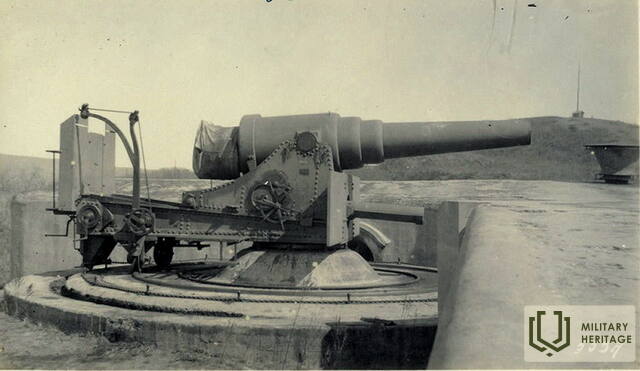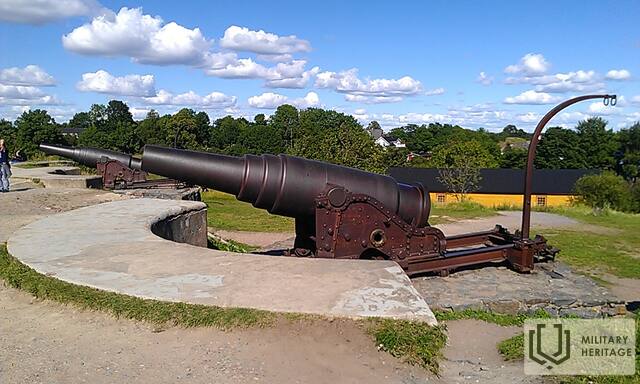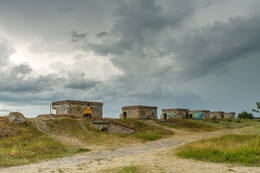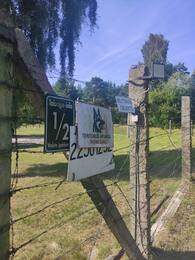Liepāja linnuse suurtükkidest

Linnuse põhjaosas asus üks neljast rannakaitsepatareist, patarei nr 1, kuid linnuse likvideerimise ajal ei olnud selle relvastus täielikult paigaldatud.
Linnuse põhjaosas asus üks neljast ehitatud rannakaitsepatareist - Patarei nr. 1. Patarei oli mõeldud mahutama kuut 6-tollist (152 mm) 1892 kahurit, kuut 11-tollist (280 mm) 1887 kahurit ja kahte 57 mm Nordenfeldi süsteemi kahurit. Ainult Cannes'i süsteemi kahuritel oli piisavalt pikk laskekaugus, et tõrjuda Saksa mereväe võimalikku tulistamist. Seega oli kindluse lammutamise ajal relvastus vaid osaliselt paigaldatud.
Seotud ajajoon
Seotud teemad
Seotud objektid
Liepaja põhjakindlus ja patarei nr.1 Karostas
Põhjafordid on Liepāja kindluse tuntuim ja visuaalselt kõige muljetavaldavam osa. Selle ajalooline nimetus on Kindlusepatarei nr 1 ja selle ehitas Vene tsaariarmee 19. sajandi lõpus.
Vähem kui 10 aastat pärast Liepāja kindluse ehitamist, 1908. aasta novembris, see likvideeriti, sest selle ehitamist peeti strateegiliseks veaks. Osa kahureid demonteeriti ja viidi Leedus asuvasse Kaunase kindlusesse, osa aga sulatati ümber. Kaitserajatisi detoneeriti kaks korda nende hävitamiseks. Plahvatustest on tänapäevani osaliselt säilinud suurtükipatareid ja maa-alused rajatised. Nii nagu Karosta, olid ka Põhjafordid Nõukogude okupatsiooni ajal suletud sõjaväeala. Põhjaforte külastades tuleb olla väga ettevaatlik. Nagu ka teistel Läti rannikualadel, on ka Karostas Läänemere järsk rannikuala võimalike maalihete tõttu ohtlik. Seetõttu ei ole lubatud kõndida kindluse varemete all.
Liepāja rannakahuripatarei nr 2
Liepāja Karosta paljude objektide hulgas on Liepāja rannakahuripatarei nr 2 siiani Liepaja salapäraseim koht. Akus nr. 2, paigaldati alati erinevate olemasolevate võimude vägede laskemoonalaod.
Liepaja kindluspatarei nr. 2 ehitati rannajoonest kaugemale ja seda kaitses kõrge vall. Akud olid relvastatud 16 1877. aasta mudeli 11-tollise (280 mm) mördiga. Pärast linnuse lammutamist rajati siia laskemoonalaod. Plahvatusohu tõttu oli territoorium avalikkusele suletud ja valve all 130 aastat, kuid nüüd on seal välja pandud ekspositsioon 1. Kurzeme diviisi staabi tegevusest aastatel 1919-1940 ning fototõendid I. Liepāja jalaväerügement, 2. Ventspilsi jalaväerügement ja Kurzeme suurtükiväerügement.









